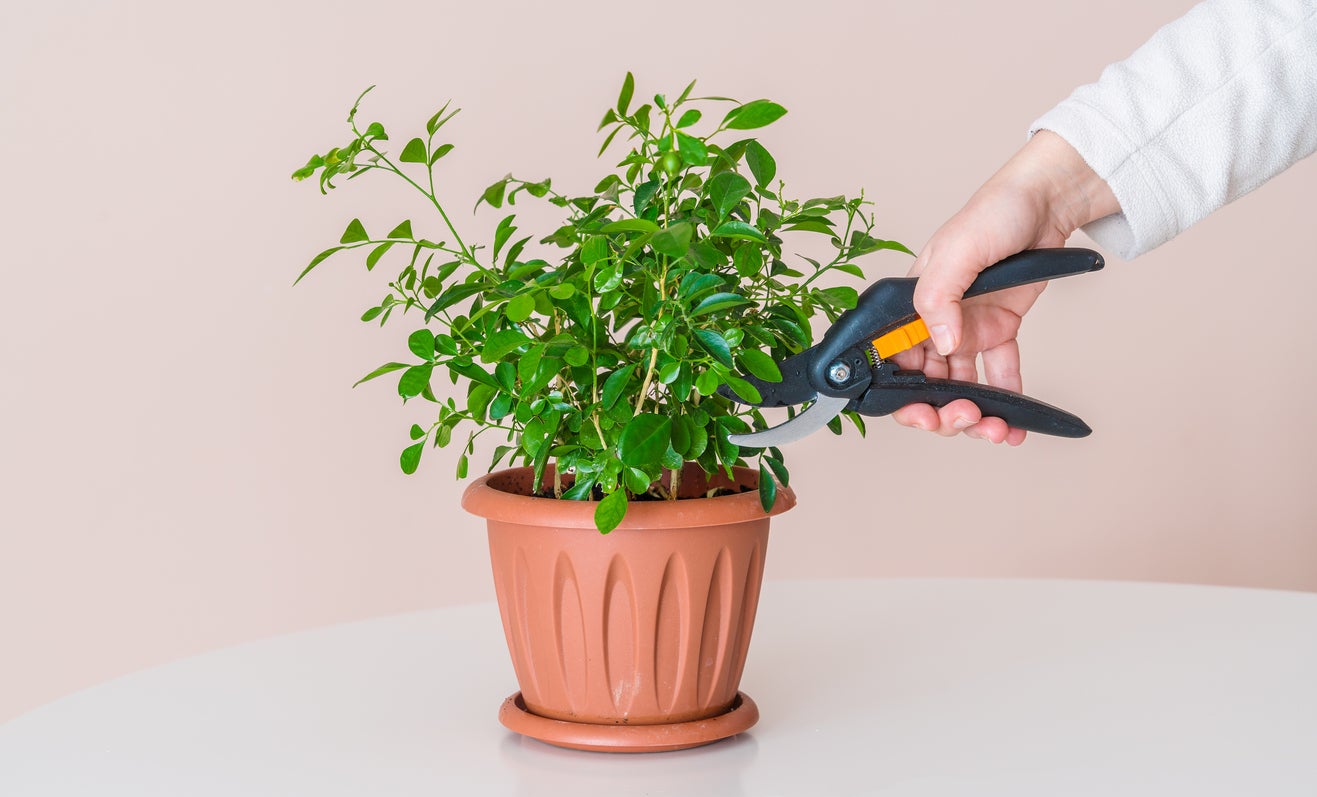Houseplant Pruning Guide: How To Prune Indoor Plants

Houseplant pruning should be considered an important part of plant care. Trimming indoor plants can be done for a variety of reasons. One method that should always be done is to simply remove any dead leaves, stems, or flowers. This will discourage pests and disease. A clean plant is a healthy plant!
Another way is to actually cut back living growth on your houseplant in order to encourage a more shapely and full plant. When should you prune houseplants? How do you prune indoor plants? Let’s take a look.
When to Prune Houseplants
It is important to know when to prune houseplants because there are good times and bad times to do this task.
The best time to prune indoor plants is right at the beginning of the growing season. For most houseplants, late winter or early spring, when days are getting longer and plants are starting to wake up, is the best time.
For flowering plants, you may want to prune right after a cycle of flowering if you choose to prune. This way you will be sure not to prune off any future unopened buds.
How to Prune Indoor Plants
First, be sure to start with sterilized scissors or pruners. This will help discourage the spread of any disease. Sterilize cutting tools with either a solution of bleach and water, or you can also hold the pruner blades in a flame for several seconds.
Make sure that your pruners are sharp. If you have a dull blade, this can result in a cut that is sloppy and this can encourage pests and disease.
Sign up for the Gardening Know How newsletter today and receive a free copy of our e-book "How to Grow Delicious Tomatoes".
Stand back from your plant and imagine what a good shape would be for your plant. A good rule of thumb is not to remove more than about a quarter of the leaves on your plant, and don’t worry! You will not harm your plant by pruning. If anything, you will rejuvenate and benefit your houseplant.
If you have any leggy stems, prune those back to right about a node. A node is where the leaf meets the stem and are areas where dormant buds exist. New growth will occur at the nodes after you prune.
For softer stemmed plants, you can just pinch the growing tips as well. This will result in a bushier houseplant.
Plants NOT to be Pruned
The vast majority of houseplants can be pruned, but there are some that you should avoid pruning whenever possible; otherwise, they will not grow back. These include Norfolk Island pines, palms, and many types of orchids including the common moth orchid (Phalaenopsis). If you cut off the tops of these plants, they will not grow back.
You can, however, prune off any dead leaves safely. Just avoid trimming back the growing tip.